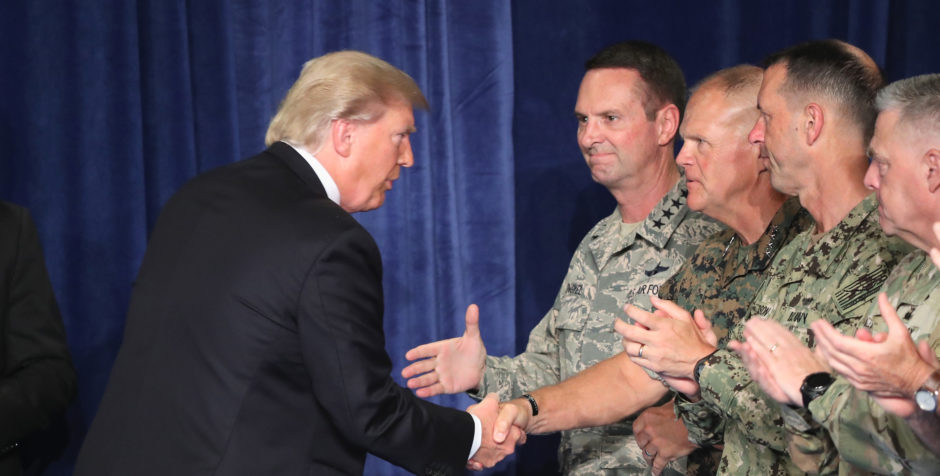THE TRUMP DOCTRINE: Exterminate the Terrorists from South East Asia, Empower the Troops, Protect America
President Trump’s unflinching speech announcing the United States’ forward-looking plan for Afghanistan represents a practical application of the Trump Doctrine, which the ACLJ highlighted just a few months ago. Amplifying a policy that he first announced in Riyadh, Saudi Arabia in May 2017, urging the leaders of Muslim countries to drive the terrorists out, President Trump once more advanced his defense of Western Civilization and United States national security: our fight in Afghanistan will be led by military commanders rather than being micro-managed by lawyers operating out of the White House.
The President’s speech on Afghanistan represents one of the most important qualities of an effective leader: the willingness of a decision maker to change his policy when confronted with new information and new facts on the ground. Admitting that his current approach to South Asia differs from his initial inclinations, the President unequivocally stated that the U.S. will not leave Afghanistan and that he will give the military “real authority” in “real time” to kill terrorists and to eliminate threats to U.S. Soldiers, U.S. interests, and the American Homeland.
The Trump Doctrine demands that we fight and fight to win in Afghanistan and elsewhere. President Trump, unlike his predecessors, will not be held hostage to either timetables or the demand to reveal, in advance, America’s troop commitments. It is clear that President Trump has listened to his senior military leaders. His actions are based on their advice rather than on demands of political correctness that have bedeviled past Administrations.
President Trump’s shift in America’s military policy is a dramatic departure from the previous Administration. President Obama gave his senior military leaders twenty-five percent less than the minimum number of troops they requested in order to win in Afghanistan. Two days later, he even announced the exact date that American forces would leave the country. These two acts ensured that U.S. forces would not and could not win in Afghanistan.
The enemy was thereby emboldened. The Taliban and other terrorists were content to wait us out—all while continuing to kill American soldiers. Former President Obama’s strategy of leading from behind, and his unwillingness to confront the enemy was on full display. The failure of his strategy is clear: his decision to withdraw from Iraq contributed to the rise of ISIS, leading to genocide and untold tragedies in Western Europe and throughout the world.
The wars in Iraq and in Afghanistan now fall to President Trump, and he will not make the same mistakes. The Commander-in-Chief’s has one primary objective in mind: To kill terrorists and to deny them a safe-haven in South Asia.
President Trump, rather than surrender to bureaucrats, has decided to delegate power to his military leaders and commanders in the field. Field commanders are now allowed to use their own discretion as to the conduct of combat operations. No longer will terrorists be allowed to hide in plain sight in their safe havens in Pakistan or elsewhere.
This striking change in the rules of engagement enables U.S. troops to protect themselves in ways the previous Administration did not allow. Now decisions connected to target selection, the prioritization of specific terrorist groups, and decisions on how to fight an enemy, will be delegated to commanders on the ground who understand the realities in front of them and who must confront actual battlefield dangers.
This change in policy and strategy is long-overdue. America is committed to taking the fight to America’s enemies and defending America first. President Trump’s approach to Afghanistan sends a warning signal to America’s enemies in Iran, North Korea, or anywhere around the globe: we will not be pushed around.
Join us in supporting America’s troops as they bring the fight to the enemy.
This article is co-authored by ACLJ Senior Military Analyst Wesley Smith.
